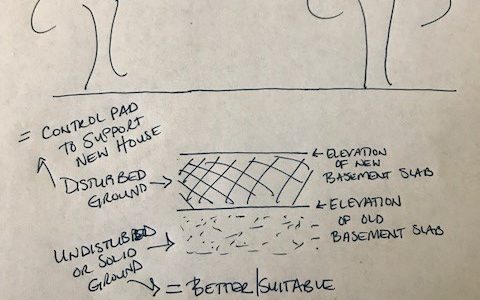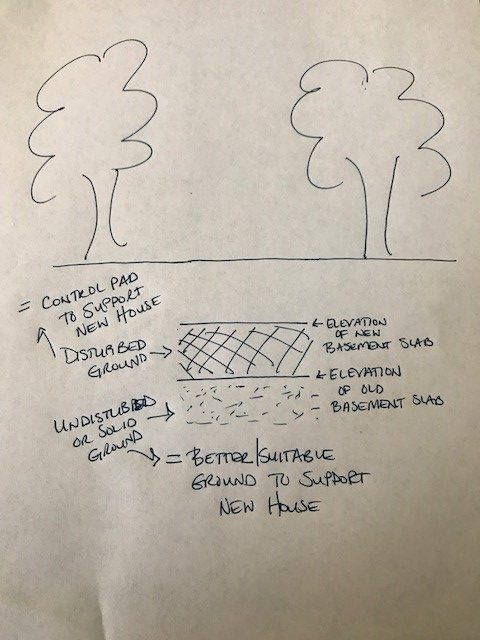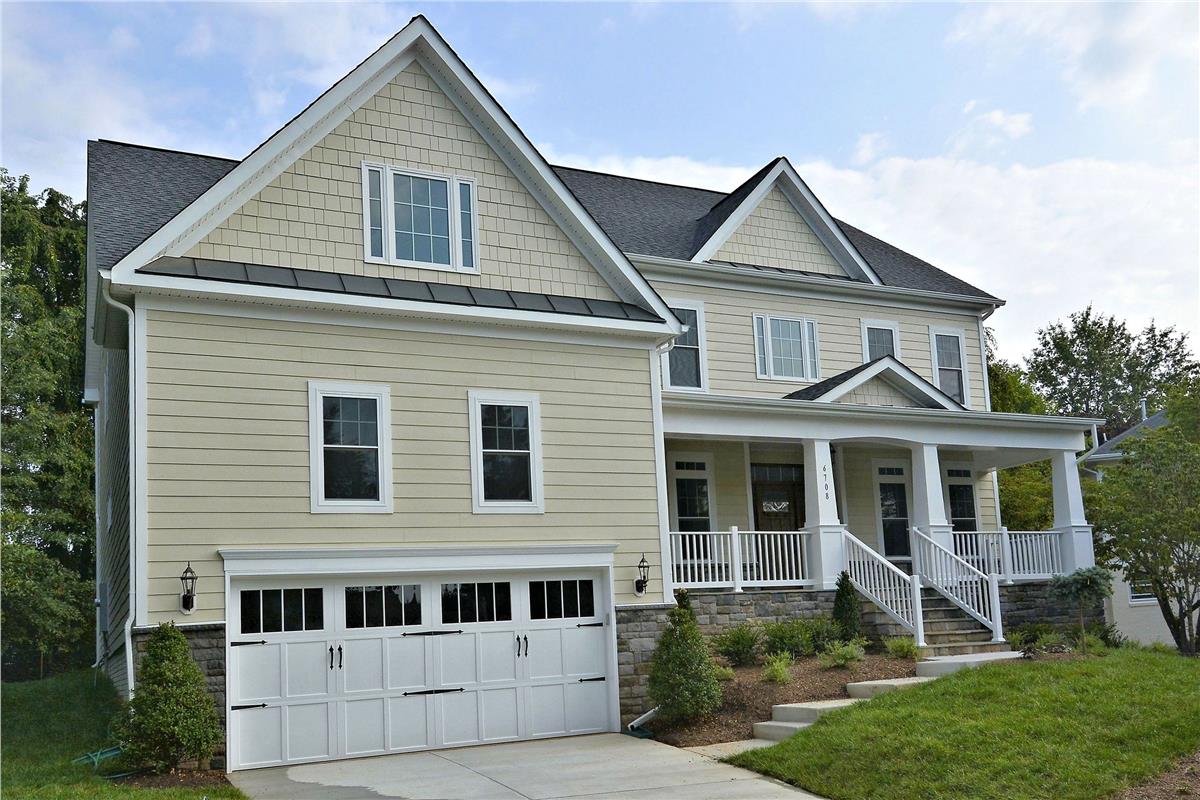How Should I Site My New Home On My Lot?

How your new home will sit on your lot is a very important aspect of planning a custom home. Depending on the lot, you may not have much to say about where the house will sit (due to the size of the lot & the house to be built), but many site engineers will ask how you want the house to sit on your lot (how low/high in the ground). Unfortunately, time and time again, I see homes being sited too high out of the ground. Why? I think there are common misconceptions that lead people to believe they need to raise it vs. working with the natural grade.
Common Misconception #1: I Need A Walkout Basement
Ugh – this is a tough one because many people feel like having a walkout basement exit (vs. steps up to grade) is ideal. Sure it brings in more natural light but there are ways to bring in natural light with a buried basement too. At the end of the day, I don’t think home buyers really care. They want good use of space and square footage. They want a nicely built home. Put it this way, I’ve never had someone say they didn’t want to buy a home because it didn’t have a walkout basement.
Common Misconception #2: Hung Sewers Are Bad
If this were true, 50% of the homes we have built (including my own!) would be undesirable. Having a hung sewer is no big deal. The only downside to a hung sewer is if your home loses power. If that is the case, the plumbing in the basement should not be used until power is restored. But that shouldn’t be a problem – just use one of the 3+ other bathrooms in the house!
Common Misconception #3: Raising My Home Out Of The Ground Will Make It More Appealing
Making a home taller than the surrounding neighbors doesn’t make it more appealing. It makes it stick out like a sore thumb. The best way to integrate a new home into an existing neighborhood is to try and blend in as much as possible – take a look at surrounding homes in the neighborhood. What style are they? How high do they sit out of the ground?
The Impact Of Siting Your Home Incorrectly
There are some implications if you don’t site your home correctly and most of them will cost you money. Here are a few…
Siting your home too high may require a controlled pad. If the new basement slab is higher than the existing basement slab, the disturbed ground in between may not support the new house. During excavation for the new house, the excavator will need to get to solid ground and typically can’t if the new basement slab is higher than the old. If this condition presents itself, you may have to install a controlled pad (gravel) in order to support the new house. Here’s an illustration…
Controlled pads = $$$ so if possible, have the new basement slab lower than the existing basement slab. It will better your chances of reaching good, solid ground to support the new house.
Siting your home too high may require (lots of) extra steps to the front door. How high the house sits out of the ground will dictate the number of steps you have coming out of your front door (and into your garage). The natural grade of the lot should determine how high the house sits out of the ground. I always try to limit the number of steps (it just looks better!), when possible, by following the natural grade. Here is a picture of a home we tore down and rebuilt in Falls Church last year. The old home had 1 step (2 risers) leading up to the front porch.
When the new home was built, we only had to add one additional step. It made the house look very natural sitting on the lot.
You can’t always limit the number of steps. It is almost always determined by the natural grade of the lot. Check out this home we tore down and rebuilt in McLean a few years ago. Here is a picture of the old house – see the steps and slope up to the house?
And here is the new house.
Extra steps = $$$ so try to work with the natural grade as much as you can. Again, sometimes this is unavoidable but should always be considered.
Siting your home too high may require retaining walls. If you are drastically changing the grade of the lot, you will likely either need to remove a lot of dirt or bring in a lot of dirt which may require retaining walls. Not all retaining walls are bad but avoid them if you can because retaining walls = $$$.
All of this reminds me of something my boys always say – you get what you get and you don’t get upset. In other words, if your lot is flat, don’t expect a walkout. If you’re lot has a slope, don’t expect your yard to be flat. Utilizing the natural grade will help your new home blend into the neighborhood and save you a lot of headache (and $$$) in the process.
Dream. Build. Live.




